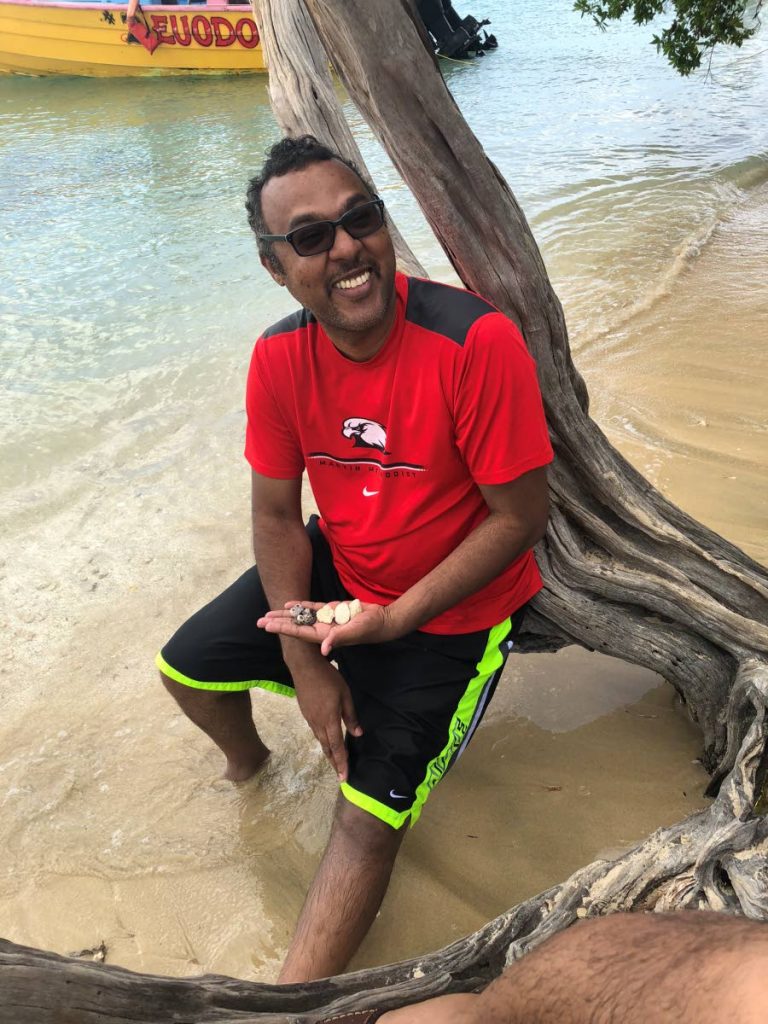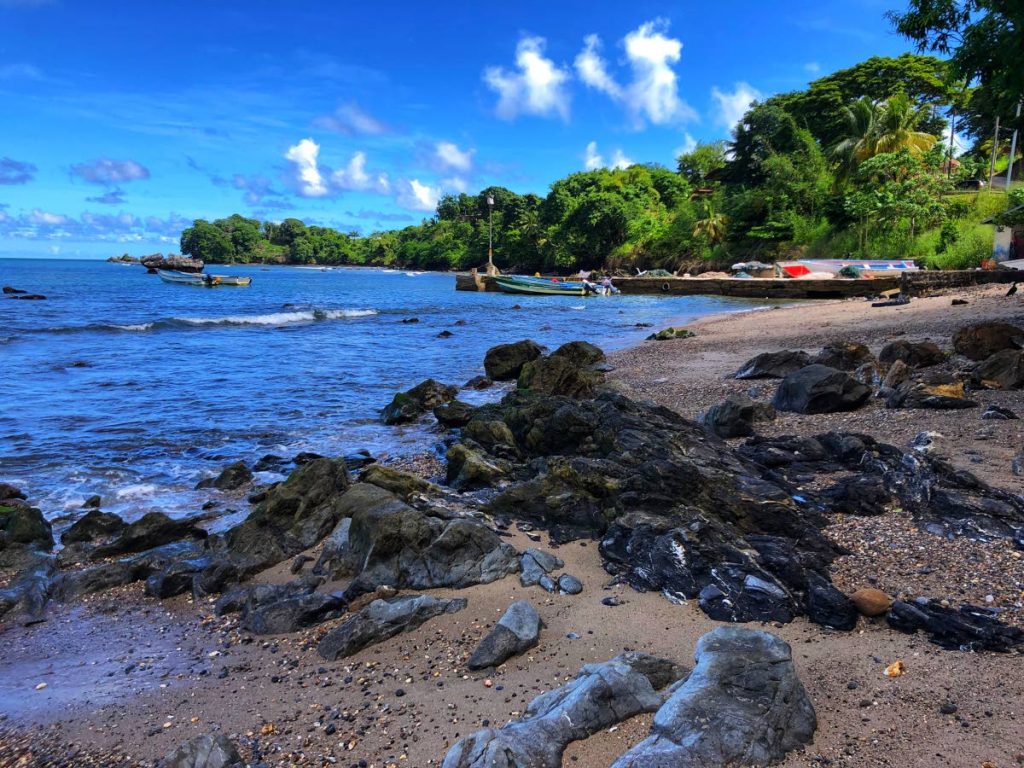Protect Toco reefs too

Dr Anjani Ganase talks with Dr Stanton Belford about the coral reefs at Toco, different from Tobago but in need of protection. This is also Trinidad’s only reef system.
Dr Stanton Belford grew up on Temple Street, Arima, while spending most of his childhood traveling between Arima and Blanchisseuse where his father’s family lived. This was Stanton’s first introduction to life underwater in the ocean and in the rivers and streams of the Northern Range. When he was not riding the waves on the north coast, he was catching fish and crab in nearby streams. Nature encouraged his passion for research in biology, particularly the marine environments of northeast Trinidad, which he was fortunate to experience when he was in high school.
“In 1993-94, Dr Carol Draper took the biology sixth form class from Arima Senior Comprehensive School to do a survey of the patchy coral reefs at Toco. This essentially was the major spark for my interest in marine science. It was the foundational interest which kept me in the field of marine ecology.”

Today, Stanton continues to observe these ecosystems, namely the coral reefs of the Toco area, as part of his research at the Martin Methodist College. He has collected over 20 years of observational and monitoring data with local and foreign collaborators.
“In 2005-2007, I completed my Masters thesis – the analysis of coral distribution and coral symbionts in a patch reef and fringing reef in the southern Caribbean – at Middle Tennessee State University. I contacted Dr Dawn Phillip, then lecturer at the University of the West Indies, St Augustine to serve as my adviser. We continued to monitor the reefs at Toco with local TT students, and currently with US-based students. This reef monitoring continues today.”
The uniqueness of Toco’s reefs that extend from Grande L’Anse to Salybia Bay demonstrate the persistence of reef communities in such margnial environmental conditions. While coral reefs of Tobago thrive in relative calm and clear waters that are conducive to coral reef development, the marine conditions around Toco are turbulent, turbid and flushed by nutrient-rich Orinoco waters. In these extreme conditions, nevertheless, there is evidence of historical reef development and a persitent reef community. To scientists these marginal environments are mysteries that give insight into survival in sub-optimal or even challenging conditions.
Similar to the research on corals found in isolated pools on the reef flats, exposed at low tides and extremely high water temperature or corals that live in the outflows of industrial discharge, these environments are a treasure trove for scientists who are interested in gaining insights to the adaptation of traits and even evolutionary changes of coral reef communities. This emerging type of research on coral reefs is invaluable, especially as humans continue to push their ecosystems from their thriving states to more compromised conditions as we alter coastal environments and contribute to climate change. Persistence in extreme and isolated environments over a long time may result in genetic adaptation, which may lead to the evolution of different species that may no longer consider the environment marginal owing to the specialised traits developed.

“The reefs along the northeastern coast of Toco can be described as “patchy.” Then once you get to Salybia (just before you take the short drive to the Toco Lighthouse), you run into the only fringing reef in Trinidad. This reef hugs the shoreline, and extends approximately 200 metres from the shore before reaching the reef crest. Patchy reefs may extend 40-50 metres from the shoreline before reaching the reef crest, as seen at Grande L’Anse (next to the Toco fishing depot). Many invertebrates show themselves during different times of the year. For instance, I have seen ebbs and flows in population increases of the bearded fireworm (Hermodice carunculata), lettuce slug (Elysia crispata), rock-boring sea urchin (Echinometra lucunter), cannonball jelly (Stomolophus meleagris) to name a few. No matter what time of the year I visit, I always see something different.”
Findings from published work that Dr Belford has done in collaboration with the late Dr Dawn Phillip from UWI found that the coral reefs of Toco consisted of a subset of Caribbean coral species, including finger corals (Porites porites) and encrusting corals, such as the starlet coral (Siderastrea radians) and fire coral (Millepora alcicornis) with rare occurrences of other reef-building coral species. These corals are capable of surviving the exposed environments because they have fast growth and reproductive rates. Although low in diversity, the corals contribute to a reef capable of providing homes to over 200 marine species, including crustaceans, sponges, sea urchins, soft coral, algae and fish.
“Toco’s reefs are not so spectacular in biodiversity in comparison to reefs of Tobago, however at both ecosystems there are infinite differences in species, symbiotic interactions, and anthropogenic effects. These attributes make reefs at both locations paramount to protect.”
There is still a lot more to understand, such as the biodiversity of the reefs in deeper water and beyond the bays, which have the potential to foster even higher biodiversity. Few studies have been undertaken because these areas are difficult to access. Dr Belford hopes that genetic work will also give insight into the evolutionary history of corals of Trinidad, which is relatively isolated, and distinct from Tobago and the rest of the Caribbean,.
“Almost no genetic data exists for this region (TT), however I plan to present major genetic findings at the International Coral Reef Symposium 2020 conference in Germany to highlight 20 years of coral reef research at Toco.”
Knowledge of these marginal environments have direct importance to us, the users and beneficiaries of the marine environment. Changes in the marine communities serve as a barometer of significant threats to water quality and other environmental conditions but also allow us to preview environments of the future. These findings will be especially beneficial to TT as a small-island developing State dependent on our coral reefs and marine ecosystems as a source of income. Toco is the only place where coral reefs in Trinidad exist, and therefore irreplaceable.
References:
Belford, S. G. (2019). Biodiversity of Coral Reef Communities in Marginal Environments along the North-Eastern Coast of Trinidad, Southern Caribbean. Pro Aqua Farm Marine Biol, 2(1), 180017.
Belford, S., & Phillip, D. (2011). Rapid assessment of a coral reef community in a marginal habitat in the southern Caribbean: a simple way to know what’s out there. Asian Journal of Biological Sciences, 4(7), 520-531.
Darling, E. S., Alvarez‐Filip, L., Oliver, T. A., McClanahan, T. R., & Côté, I. M. (2012). Evaluating life‐history strategies of reef corals from species traits. Ecology Letters, 15(12), 1378-1386.
Kawecki, T. J. (2008). Adaptation to marginal habitats. Annual Review of Ecology, Evolution, and Systematics, 39, 321-342.

Comments
"Protect Toco reefs too"